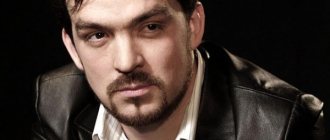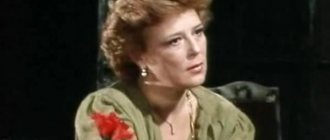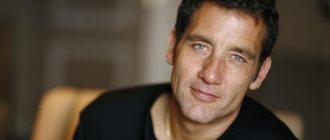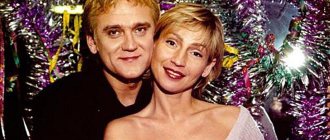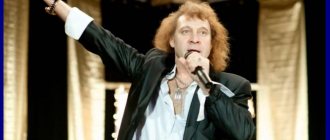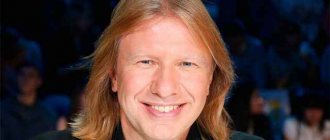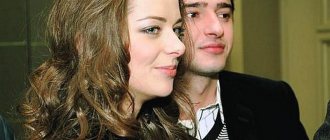Biography
Nobel Prize winner Hemingway was the most translated foreign writer into Russian during the Soviet Union. Ernest’s works were published in the magazines “30 Days”, “Abroad”, “International Literature”, etc., and in European countries this gifted man was called “the number one master of the pen.”
The great writer was born in America, on the southwestern coast of Lake Michigan, not far from the cultural capital of the Midwest - Chicago, in the provincial town of Oak Park. Ernest was the second child of six children. The boy was raised by parents who were far from literary art, but wealthy: the popular performer Mrs. Grace Hall, who had retired from the stage, and Mr. Clarence Edmont Hemingway, who devoted his life to medicine and natural history.
It is worth saying that Miss Hall was a unique woman. Before her marriage, she delighted many cities in the United States with her sonorous voice, but left the singing field due to intolerance to stage light. After leaving, Hall blamed everyone for her failure, but not herself. Having accepted Hemingway’s marriage proposal, this interesting woman lived with him all her life, devoting her time to raising children.
Ernest Hemingway as a child
But even after marriage, Grace remained a strange and eccentric young lady. Ernest was born until he was four years old in girls' dresses and with bows on his head because Mrs. Hemingway wanted a girl, but the second child was a boy.
In his free time, general practitioner Clarence loved to go hiking, hunting and fishing with his son. When Ernest was 3 years old, he got his own fishing rod. Later, childhood impressions associated with nature will be reflected in Hemingway's stories.
Mom dressed Ernest Hemingway as a girl
In his youth, Khem (the writer's nickname) voraciously read classical literature and composed stories. While at school, Ernest made his debut in a local newspaper as a journalist: he wrote notes about past events, concerts and sports competitions.
Although Ernest attended the local Oak Park school, his works often describe northern Michigan, a picturesque place where he went on summer vacation in 1916. After this trip, Ernie wrote a hunting story, “Sepi Zhingan.”
Ernest Hemingway fishing
Among other things, the future laureate in literature had excellent sports training: he was fond of football, swimming and boxing, which played a cruel joke on the talented young man. Due to the injury, Hem was practically blind in his left eye and also damaged his left ear. For this reason, in the future the young man was not accepted into the army for a long time.
Ernest Hemingway in his youth
Ernie wanted to become a writer, but his parents had other plans for their son's future. Clarence dreamed that his son would follow in his father’s footsteps and graduate from medical school, and Grace wanted to raise a second Schubert or Beethoven, imposing on her child the music lessons he hated. This mother’s whim affected Khem’s studies, as he missed a whole year of compulsory classes, studying the cello every day. “She thought I had abilities, but I had no talent,” said the elderly writer in the future.
Ernest Hemingway in the army
After graduating from high school, Ernest, disobeying his parents, did not go to university, but began to master the art of journalism in the city newspaper of Kansas, The Kansas City Star. At work, police reporter Hemingway encountered such social phenomena as deviant behavior, dishonor, crime and the corruption of women; he visited crime scenes, fires, and visited various prisons. However, this dangerous profession helped Ernest in literature, because he constantly observed the behavior of people and their everyday dialogues, devoid of metaphorical delights.
Childhood and youth
Ernest Hemingway, born near Lake Michigan on July 21, 1899, near Chicago, but in a provincial city in a large family.
The parents had six children who were raised in prosperity. Mother Grace Hall played in the theater, and father Clarence Edmont was a doctor. In his childhood, the boy did not think about a literary biography. From the age of three, he went fishing, hunting, and hiking with his father. This is where the love of nature came from in many of the works of the adult writer Hemingway. At school, Ernest was assigned to write notes about all the events held in the school newspaper. The boy played football, boxing, and was fond of swimming. Boxing did not bring him much pleasure in the future: his left eye could no longer see, and his left ear was damaged. These consequences of injuries caused the guy to refuse military service.
When the time came to choose a profession, Ernest already passionately wanted to connect his future biography with writing. The father dreamed of a medical career for his son. The mother decided that her beloved child would become Schubert or Beethoven. After graduating from high school, young Hemingway got a job at a Kansas city newspaper as a police reporter.
He became acquainted with all the dirt and negativity of city life, which he later successfully used in his works. Ernest became a participant in military battles, after which he left for Canada and again began working as a journalist. The son finally quarreled with his mother and left his parents' home forever. After some time, he settled in Paris.
Literature
After participating in military battles in 1919, the classic moved to Canada and returned to journalism. His new employer was the editors of the Toronto Star newspaper, which allowed the gifted young man to write materials on any topic. However, not all of the reporter’s works were published.
Writer Ernest Hemingway
After a quarrel with his mother, Hemingway took things from his native Oak Park and moved to Chicago. There the writer continued to collaborate with Canadian newspapermen and at the same time published notes in the Co-operative Commonwealth.
In 1821, after his marriage, Ernest Hemingway fulfilled his dream and moved to the city of love - Paris. Later, impressions of France will be reflected in the book of memoirs “A holiday that is always with you.”
Ernest Hemingway on the hunt
There he met Sylvia Beach, the eminent owner of the Shakespeare and Company bookstore, which was located not far from the Seine. This woman had enormous influence in the literary circle, because it was she who published James Joyce’s scandalous novel “Ulysses,” which was banned by censors in the United States.
Ernest Hemingway and Sylvia Beach outside Shakespeare and Company
Hemingway also became friends with the famous writer Gertrude Stein, who was wiser and more experienced than Hem and considered him her student all her life. The extravagant woman disdained the creativity of journalists and insisted that Ernie be involved in literary activities as much as possible.
Triumph came to the master of the pen in the fall of 1926 after the publication of the novel “The Sun Also Rises” (“Fiesta”) about the “lost generation.” The main character Jake Barnes (Hemingway's prototype) fought for his homeland. But during the war he received a serious injury, which forced him to change his attitude towards life and women. Therefore, his love for Lady Brett Ashley was platonic in nature, and Jake healed his emotional wounds with the help of alcohol.
Books by Ernest Hemingway
In 1929, Hemingway wrote the immortal novel “A Farewell to Arms!”, which to this day is included in the required list of literature for study in schools and higher educational institutions. In 1933, the master composed a collection of short stories, “The Winner Takes Nothing,” and in 1936, Esquire magazine published Hemingway’s famous work “The Snows of Kilimanjaro,” which tells about the writer Harry Smith, who is looking for the meaning of life while traveling on safari. Four years later, the war work “For Whom the Bell Tolls” was released.
Ernest Hemingway at work
In 1949, Ernest moved to sunny Cuba, where he continued to study literature. In 1952 he wrote the philosophical and religious story “The Old Man and the Sea,” for which he was awarded the Pulitzer and Nobel Prizes.
Ernest Hemingway
HEMINGWAY, ERNEST MILLER (Hemingway, Ernest Miller) (1899−1961), one of the most popular and influential American writers of the 20th century, who gained fame primarily for his novels and short stories. Born in Oak Park (Illinois) in the family of a doctor. He grew up in Oak Park and attended local schools, but his name is usually associated with northern Michigan, where he spent his childhood summers and where several of his best-known stories are set. During his school years, he was actively involved in sports. After graduating from school, he left home forever and became a reporter for the Kansas newspaper The Star, where he acquired valuable writing skills. He repeatedly tried to enlist in military service, but due to an eye injury he received in adolescence, he was each time declared unfit. Hemingway ended up serving in World War I as a Red Cross ambulance driver. In July 1918 he was seriously wounded at Fossalta di Piave in Italy and was subsequently awarded an Italian medal. After his dismissal, he went to Michigan for further treatment, but soon went back to Europe as a foreign correspondent for the Toronto Star newspaper. He settled in Paris and there, encouraged by Gertrude Stein, E. Pound and others, he decided to become a writer. His posthumously published book A Moveable Feast (1964) is dedicated to his memories of this period. It contains both autobiographical notes and portraits of contemporary writers. Several of Hemingway's early stories from his first major collection, In Our Time (1925), indirectly reflected childhood memories. The stories attracted critical attention for their stoic tone and objective, restrained style of writing. The following year saw the release of Hemingway's first novel, The Sun Also Rises, a disillusioned and beautifully composed portrait of the Lost Generation. Thanks to the novel, which tells the story of the hopeless and aimless wanderings of a group of expatriates in post-war Europe, the term “Lost Generation” (its author is Gertrude Stein) has become commonplace. Equally successful and equally pessimistic was the next novel, A Farewell to Arms (1929), about an American lieutenant deserting the Italian army and his English lover who dies in childbirth. The first triumphs were followed by several less notable works - Death in the Afternoon (1932) and Green Hills of Africa (1935); the latter is an autobiographical and detailed account of large game hunting in Africa. Death in the Afternoon is dedicated to bullfighting in Spain, in which the author sees more of a tragic ritual than a sport; a second work on the same topic, The Dangerous Summer, was published only in 1985. In the novel To Have and Have Not (1937), set during the economic depression, Hemingway first spoke about social problems and the possibility of coordinated, collective action. This new interest led him back to Spain, which was torn by civil war. Hemingway's long stay in the country resulted in his only major play, The Fifth Column (1938), set in besieged Madrid, and his longest novel, the first large-scale and significant work since 1929, For Whom the Bell Tolls, 1940). This book, which tells the story of the last three days of an American volunteer who gave his life for the republic, argues that the loss of freedom in one place affects it everywhere. Following this success, there was a ten-year pause in Hemingway’s work, which was explained, among other things, by his non-literary activities: active, although undertaken at his own risk, participation in the Second World War, mainly in France. His new novel Across the River and into the Trees (1950), about an elderly American colonel in Venice, was received coldly. But the next book, the story The Old Man and the Sea (1952), was almost unanimously recognized as a masterpiece and served as the reason for awarding the author the Nobel Prize in Literature in 1954. Three collections of Hemingway's stories - In Our Time, Men Without Women ( Men without Women (1927) and Winner Takes Nothing (1933) cemented his reputation as an outstanding storyteller and spawned numerous imitators. In his personal life, Hemingway was characterized by the same activity that the heroes of his books showed, and he owes part of his fame to various kinds of non-literary adventures. In recent years, he owned an estate in Cuba and houses in Key West, Florida, and Ketchum, Idaho. Hemingway died in Ketchum on July 2, 1961, after shooting himself with a gun. The central characters of Hemingway's novels and some of his short stories are very similar and have received the collective name "Hemingway hero." A much smaller role is played by the “Hemingway heroine” - an idealized image of a disinterested, flexible woman, the hero’s beloved: the Englishwoman Catherine in A Farewell to Arms, the Spanish Maria in For Whom the Bell Tolls, the Italian Renata in Beyond the River, in the Shade of the Trees. A somewhat less clear but more significant image that plays a key role in Hemingway's work is that of a man who embodies what is sometimes called the "Hemingway code" in matters of honor, courage and perseverance. Hemingway's literary reputation rests largely on his prose style, which he honed with great care. Strongly impressed by Mark Twain's Huckleberry Finn and some of the works of S. Crane, having learned the lessons of Gertrude Stein, S. Anderson and other writers, he developed a completely new, simple and clear style in post-war Paris. His style of writing, basically conversational, but spare, objective, unemotional and often ironic, influenced writers all over the world and, in particular, significantly revived the art of dialogue.
Personal life
The personal life of Ernest Hemingway was so replete with all sorts of events that a whole book would not be enough to describe the adventures of this great writer. For example, the master was a thrill-seeker: at a young age he could “rein in” a bull by participating in a bullfight, and was also not afraid to be alone with a lion.
It is known that Hem adored the company of women and was amorous: as soon as a girl he knew showed her intelligence and graceful manners, Ernest was immediately amazed by her. Hemingway created for himself the image of a certain Marquis de Sade, talking about how he had many mistresses, ladies of easy virtue and black concubines. Whether this is fiction or not, biographical facts say that Ernest really had many chosen ones: he loved everyone, but called each subsequent marriage a huge mistake.
Ernest Hemingway and Agnes von Kurowski
Ernest's first lover was the lovely nurse Agnes von Kurowski, who treated the writer in the hospital for his wounds during the First World War. It was this light-eyed beauty who became the prototype of Catherine Barkley from the novel “A Farewell to Arms!” Agnes was seven years older than her chosen one and had maternal feelings for him, calling him “baby” in her letters. The young people thought of legitimizing their relationship with a wedding, but their plans were not destined to come true, as the flighty girl fell in love with a noble lieutenant.
Wedding of Ernest Hemingway and Hadley Richardson
The second chosen one of the literary genius was a certain red-haired pianist Elizabeth Hadley Richardson, who was 8 years older than the writer. She may not have been a beauty like Agnes, but this woman supported Ernest in every possible way in his activities and even gave him a typewriter. After the wedding, the newlyweds moved to Paris, where at first they lived from hand to mouth. Elizabeth gave birth to Hema's first child, John Hadley Nicanor ("Bumby").
Ernest Hemingway with his wife and son
In France, Ernest often visited restaurants where he enjoyed coffee in the company of his friends. Among his acquaintances was the socialite Lady Duff Twisden, who had high self-esteem and did not disdain strong words. Despite such provocative behavior, Duff enjoyed the attention of men, and Ernest was no exception. However, at that time the young writer did not dare to cheat on his wife. Twisden was later "recast" as Brett Ashley from The Sun Also Rises.
Ernest Hemingway with Paulina Pfeiffer
In 1927, Ernest began to become involved with Pauline Pfeiffer, Elisabeth's friend. Paulina did not value her friendship with the writer’s wife, but on the contrary, she did everything to win someone else’s man. Pfeiffer was pretty and worked for the fashion magazine Vogue. Later, Ernest will say that a divorce from Richardson will be the greatest sin of his entire life: he loved Paulina, but was not truly happy with her. From his second marriage, Hemingway had two children - Patrick and Gregory.
Ernest Hemingway and Martha Gellhorn
The third wife of the laureate was the famous US correspondent Martha Gellhorn. The adventurous blonde loved hunting and was not afraid of difficulties: she often covered important political news happening in the country and did dangerous journalistic work. Having achieved a divorce from Paulina in 1940, Ernest proposes to Martha. However, soon the newlyweds’ relationship “came apart at the seams,” since Gellhorn was too independent, and Hemingway loved to dominate women.
Ernest Hemingway and Mary Welsh
Hemingway's fourth betrothed is journalist Mary Welsh. This radiant blonde supported Ernest’s talent throughout the marriage, and also helped with publishing efforts, becoming her husband’s personal secretary.
Ernest Hemingway with Adriana Ivancic
In 1947 in Vienna, a 48-year-old writer falls in love with Adriana Ivancic, a girl 30 years younger than him. Hemingway was attracted to the white-skinned aristocrat, but Ivancic treated the author of the stories like a father, maintaining friendly relations. Mary knew about her husband’s hobby, but she acted calmly and wisely as a woman, knowing that the fire that arose in Hemingway’s chest could not be extinguished by any means.
Paris - Toronto - Paris
The writer always believed that the most interesting people in the world lived in the capital of France. From the biography of Ernest Hemingway it is known that the young family settled in a small apartment near Place Contrescarpe. At this time, the writer met influential artists such as Pablo Picasso, Joan Miro, Juan Gris. During 20 months of work in Paris, Ernest wrote 88 stories for the Toronto Star. In December 1922, his wife Hadley lost a suitcase with the writer's manuscripts, this news came as a blow to Ernest. The following September (1923) they returned to Toronto, and in October their first child, John Hadley Nicanor, was born. At the same time, Ernest’s first book, “Three Stories and Ten Poems,” was published. In Toronto, the writer missed Paris, journalism did not attract him, and he dreamed of returning to the life of a writer. The family returned to Paris in January 1924. Hemingway wrote his own stories and worked on the editorial board of The Transatlantic Review. In 1925, a collection of stories “In Our Time” was published, which aroused interest in the young writer.
Death
Fate constantly tested Ernest's resilience: Hemingway survived five accidents and seven catastrophes, and was treated for bruises, fractures and a concussion. He also managed to recover from anthrax, skin cancer and malaria.
Monument to Ernest Hemingway
Shortly before his death, Ernest suffered from hypertension and diabetes, but was admitted to the Mayo Psychiatric Dispensary for “cure.” The writer’s condition only worsened, and he also suffered from manic paranoia about being watched. These thoughts drove Hemingway crazy: it seemed to him that every room wherever he was was equipped with bugs, and vigilant FBI agents were on his heels everywhere.
Ernest Hemingway's grave
The clinic doctors treated the master in the “classical way”, resorting to electroconvulsive therapy. After 13 sessions, therapists made it impossible for Hemingway to write because his vivid memories had been erased by electric shock. The treatment did not help, Ernest plunged deeper into depression and obsessive thoughts, talking about suicide. Returning to Ketchum on July 2, 1961, after being discharged, Ernest, thrown “to the margins of life,” shot himself with a gun.
last years of life
The writer had many serious illnesses. With age, from a sociable, sociable man, he turned into a reserved and modest person. Ernest had a very ambivalent attitude towards psychiatrists, so he did not accept the fact that the cause of his condition was severe depression, which in the future developed into paranoia about constant surveillance. However, in the 80s of the last century, the fact of surveillance was confirmed, and Hemingway’s FBI case was declassified. They tried to treat the writer with psychiatric methods, one of which was electroconvulsive therapy. As a result of this, he lost his memory and the ability to write, stopped working, did not recover from a state of severe depression, suffered from paranoia and began to entertain thoughts of suicide. On July 2, 1961, Ernest Hemingway shot himself at his home in Ketchum.
Interesting Facts
- One day Ernest made a bet with his friends that he would write the most laconic and touching work in the world. The literary genius managed to win the bet by writing six words on paper:
“For sale: baby shoes, never worn.”
- Ernest was terribly afraid of public speaking, and especially hated giving autographs. But one persistent fan, dreaming of the coveted signature, pursued the writer for 3 months. As a result, Hemingway gave up and wrote the following message:
"To Victor Hill, a real son of a bitch who can't take no for an answer!" (“To Victor Hill, a real Son of a Bitch, who can’t take “no” for an answer”).
- Before Ernest, Mary Welsh had a husband who did not want to agree to a divorce. So one day an enraged Hemingway put his photo in the toilet and started shooting with a gun. As a result of this spontaneous act, 4 rooms in an expensive hotel were flooded.
Hemingway Quotes
- While sober, make all your drunken promises come true - this will teach you to keep your mouth shut.
- Travel only with those you love.
- If you can provide even a small service in life, you shouldn’t shy away from it.
- Don't judge a person just by his friends. Remember that Judas had perfect friends.
- Look at pictures with an open mind, read books honestly and live as you live.
- The best way to know if you can trust someone is to trust them.
- Of all the animals, only man knows how to laugh, although he has the least reason for this.
- All people are divided into two categories: those with whom it is easy, and just as easy without them, and those with whom it is difficult, but impossible without them.
Bibliography
- "Three Stories and Ten Poems" (1923);
- "In Our Time" (1925);
- "The Sun Also Rises (Fiesta)" (1926);
- "A Farewell to Arms!" (1929);
- "Death in the Afternoon" (1932);
- "The Snows of Kilimanjaro" (1936);
- "To Have and Have Not" (1937);
- "For Whom the Bell Tolls" (1940);
- “Across the River, in the Shade of the Trees” (1950);
- "The Old Man and the Sea" (1952);
- "Hemingway, Wild Time" (1962);
- "Islands in the Ocean" (1970);
- "Garden of Eden" (1986);
- "A Collection of Short Stories by Ernest Hemingway" (1987);
World War II, Cuba
For Hemingway, World War II began in Cuba. Here he tracked down enemy submarines and spies on his boat. However, he soon moved to Europe, where he participated in active hostilities.
Soon after the war, the writer returned to Cuba and began writing. It was here that he wrote the famous story “The Old Man and the Sea.” For it, the writer was awarded the Pulitzer Prize.

